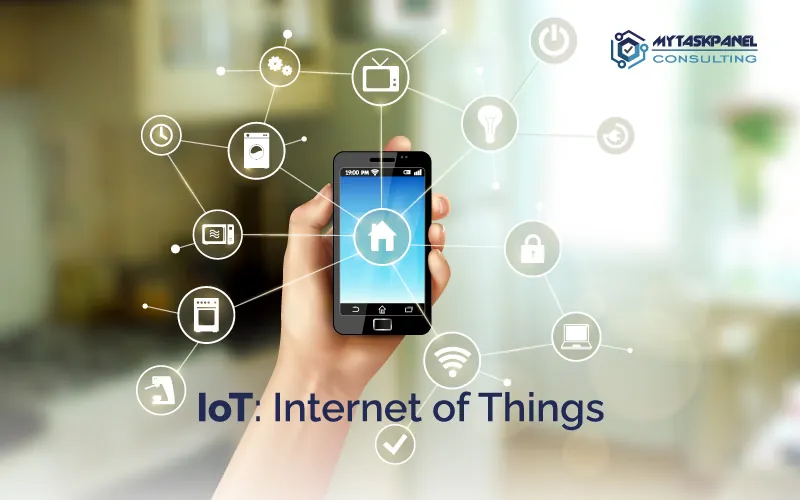In this article, we’ll introduce you to the Internet of Things (IoT). Keep reading and find out what it is, what its characteristics are, what it is for and how it works.
What is the Internet of Things?
The Internet of Things (IoT) is a system of connected devices capable of collecting and sharing data through a communications network. These devices include everything from household appliances to vehicles and remote sensors.
Simply put, the IoT allows electronic objects and devices to communicate and share information over the Internet. For example, a smart thermostat that controls the temperature of a house can connect to the Internet and allow you to control it from your smartphone.
IoT features
- Connectivity: devices are connected to the Internet and can communicate with each other.
- Interoperability: devices can work together and share information, regardless of their manufacturer or operating system.
- Automation: devices can make decisions and perform actions, without the need for human intervention.
- Sensors and Data Collection: devices may collect and share information about your environment and your usage.
- Data analysis: devices can use algorithms to analyze the collected data and make informed decisions.
- Remote Accessibility: users can access and control devices from anywhere over the Internet.
What is the Internet of Things for?
The IoT has a wide range of applications, including:
- Smart home: control and monitor energy consumption, security and comfort at home.
- Health and well-being: monitoring the health and physical condition of people, through devices such as wearables and sensors.
- Manufacturing and production: improve efficiency and quality in manufacturing and production through real-time monitoring of processes and optimization of resources.
- Logistics and transportation: monitor and optimize the supply chain and delivery of products.
- Agriculture: improve efficiency and sustainability in agriculture by monitoring climate, soil quality and resource use.
- Smart cities: improve efficiency in the management of public services and the quality of life of citizens by optimizing traffic, monitoring the environment and managing energy.
How does the IoT work?
The IoT works by connecting everyday objects, such as household appliances, vehicles, and electronic devices, to the Internet. These devices are equipped with technologies such as sensors, microcontrollers, and wireless connectivity; this allows them to collect and share information.
Here is an example of how the IoT works in a smart home:
- Sensing: Sensors in IoT devices, such as thermostats, detect the temperature and humidity in the house.
- Communication: the sensors send the information to a gateway or IoT hub, which is responsible for transmitting the information to the Internet.
- Analysis: The information collected is analyzed using algorithms in the cloud or on a local server to identify patterns and trends.
- Action: Based on the analyzed data, the IoT system can make automated decisions, such as turning the air conditioning or heating on or off, or send an alert to a user if the temperature exceeds a certain threshold.
- Remote control: Users can control and monitor IoT devices from a mobile app or web site, making it easy for them to adjust the temperature or turn devices on and off from anywhere.
With its ability to collect and analyze data in real time, the Internet of Things (IoT) enables greater efficiency and automation in a wide variety of sectors, from the home to healthcare and industry. As technology continues to evolve, we are likely to see greater impact and adoption of the IoT in the future. However, we must also consider the challenges and concerns around privacy and security, and work as a team to effectively address them.










